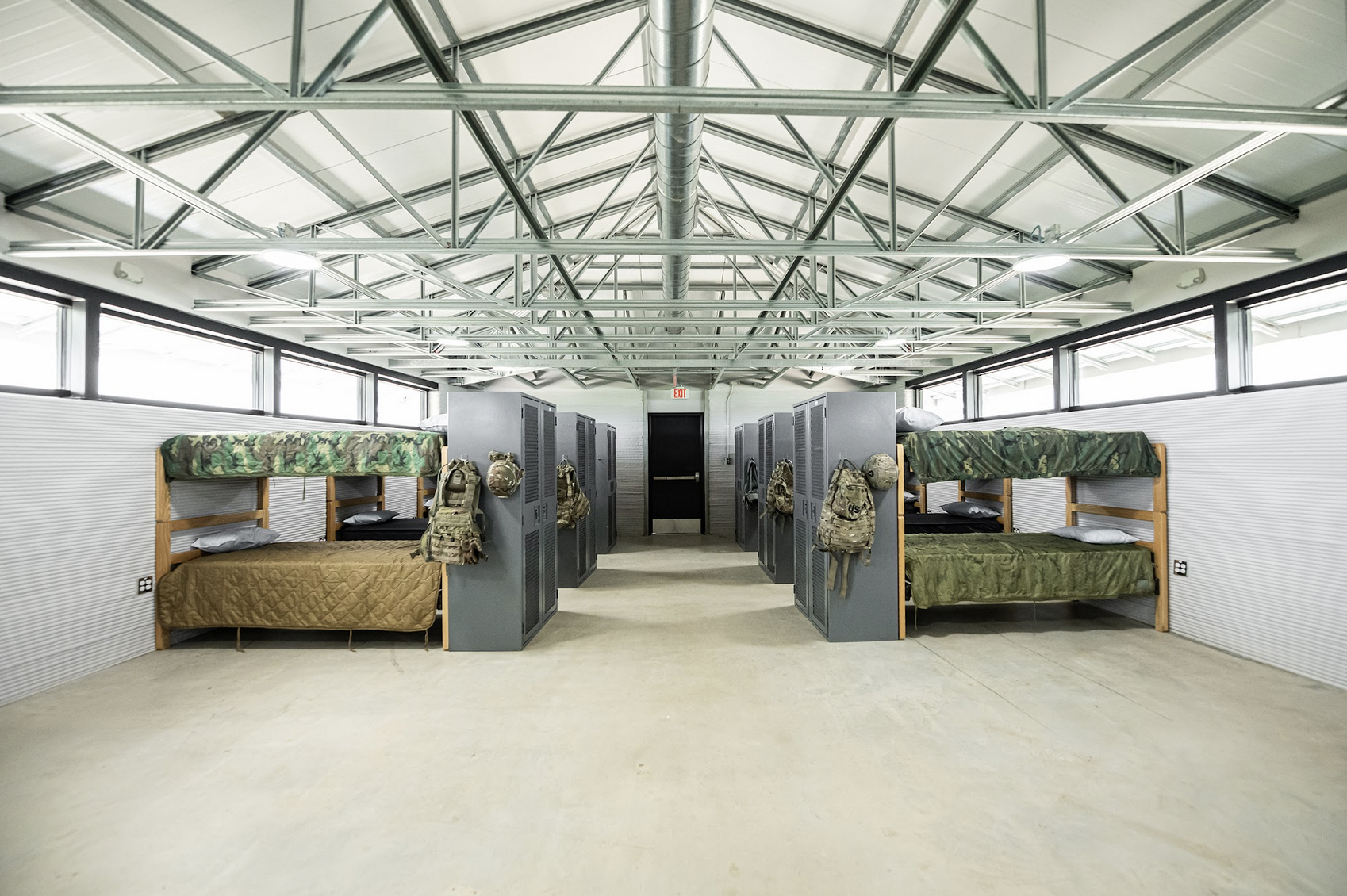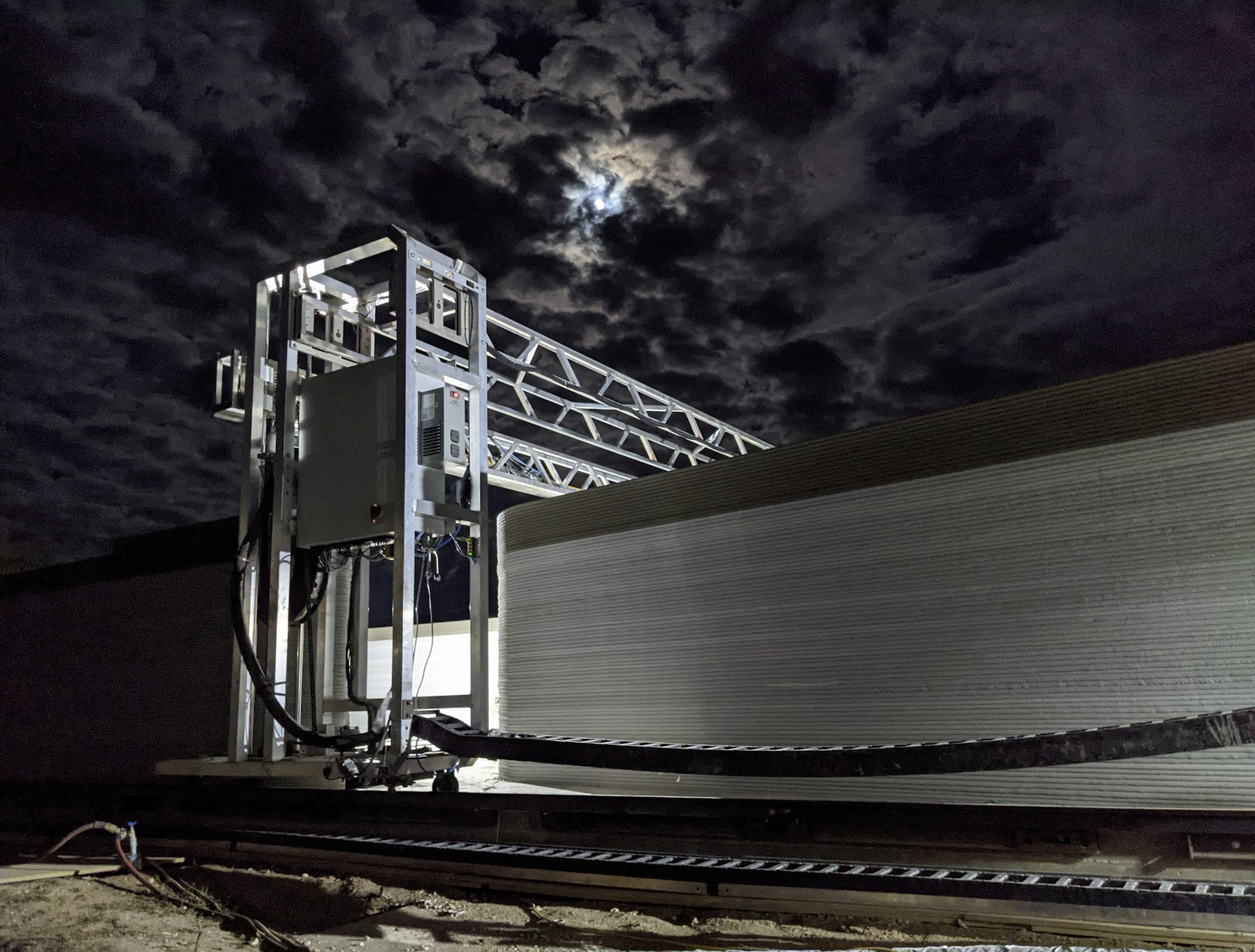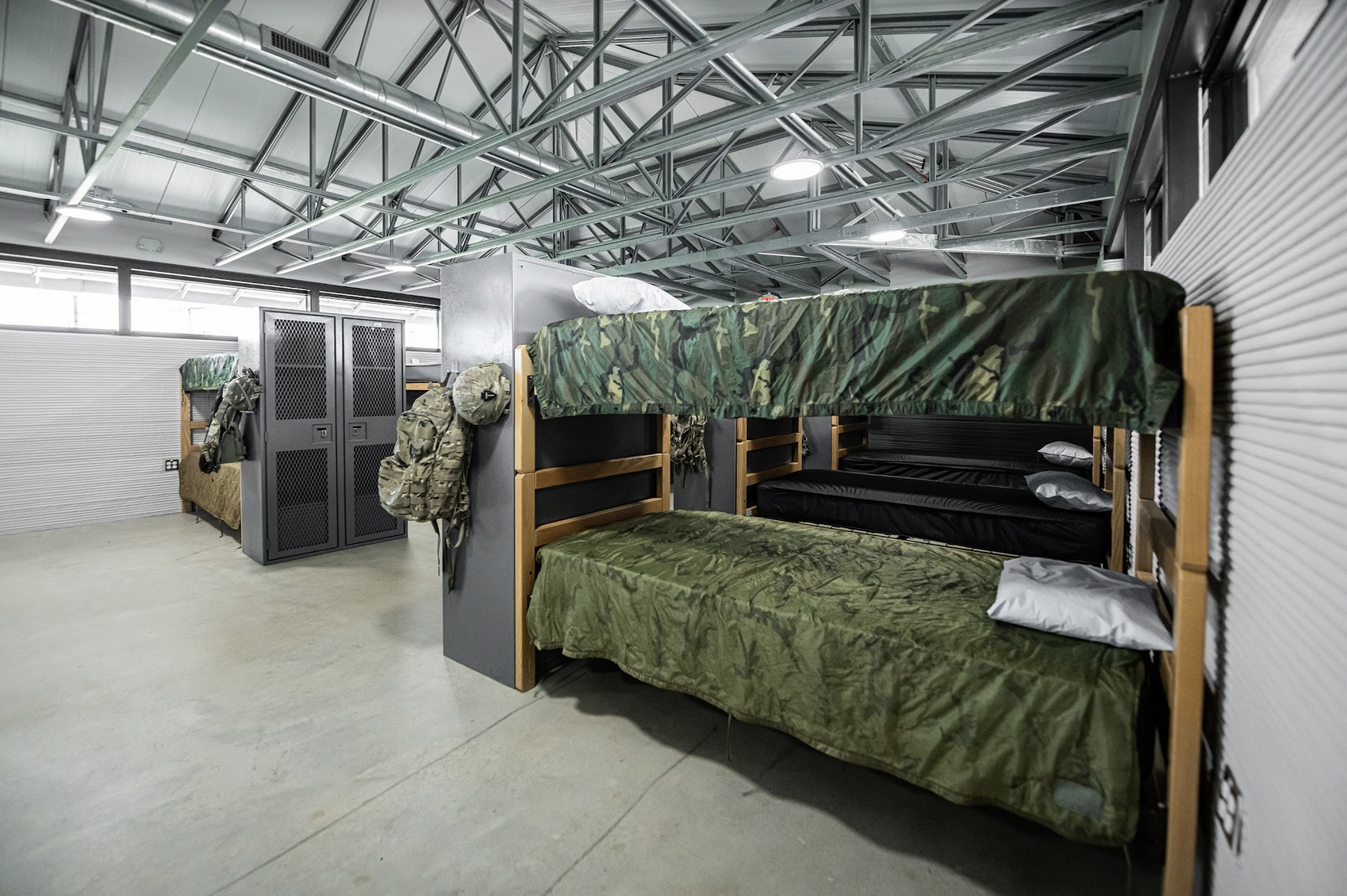ICON’s latest 3D printed training barracks structure in Texas signals another positive step for the additive construction industry. Described by the company as the largest 3D printed structure in North America, the more than 3,800 square feet building unveiled on August 16, 2021, is set to house up to 72 women and men at the Camp Swift Training Center in Bastrop during their military training for missions in Texas or overseas.
In what seems like another first for the Austin-based advanced construction technologies company, the 3D printed training barracks were created using ICON’s next-generation Vulcan construction system and proprietary Lavacrete material through a partnership with the Texas Military Department (TMD). Vulcan is ICON’s next-generation construction system, designed and engineered from the ground up for volume 3D printing with precision and speed. Capable of printing homes and structures up to 3,000 square feet, the robotic construction platform has proven faster than conventional methods, produces less waste, and enables greater design freedom.

Inside ICON’s 3D printed military barracks for the Texas Military Department. Image courtesy of ICON.
The first barracks were revealed in an official ribbon-cutting ceremony with a host of government officials and members of the TMD and will be resided by soldiers beginning Fall 2021. However, plans for future barracks and other technological developments in collaboration with the Department of Defense and U.S. Military organizations are currently in the works.
Designed by boutique firm Logan Architecture and structurally engineered by Fort Structures, the project aims to deliver sustainable, resilient, and energy-efficient housing that can last longer than traditional buildings. In addition, the site will house men and women from the Texas Army National Guard who go to Camp Swift—the largest army training and transshipment camp in Texas—to train and mobilize for deployments.
According to Tracy Norris, Major General and Adjutant General of Texas, the state has turned into a “technological center of gravity within the nation.” In fact, ICON alone has become globally famous for 3D printing next-generation structures in its Texas headquarters. Earlier this month, the additive construction business teamed up once again with NASA to 3D print the Mars Dune Alpha, a 1,700 square-foot mock Martian habitat structure located at NASA’s Johnson Space Center in Houston, Texas.
The Lone Star State is even expected to be the new home to the U.S. headquarters of Israeli zero-emission technology e-mobility company REE. With Austin as the tech center of Texas and Houston turning into a nest of tech hubs, including Hewlett Packard’s move from Silicon Valley, the state is truly transforming into a center for advanced technologies.

ICON’s Vulcan system 3D printing the military barracks for the Texas Military Department at night. Image courtesy of ICON.
ICON’s proprietary technology provides a new option for the U.S. Military to leverage commercial additive manufacturing to produce safe, strong, and energy-efficient structures at speed and with the design freedom needed for soldiers at home and overseas. The National Guard, in particular, is on the front lines of humanitarian assistance and disaster relief missions. From natural disaster responses to large-scale transportation of supplies and troops via ground vehicles, National Guard troops have even been critical for hospitals during the ongoing Covid-19 pandemic, assisting healthcare workers who are being pushed to the brink by surges of cases.
Texas Military Department Director of Facilities Zebadiah Miller said the printed barracks will not only provide soldiers with a safe and comfortable place to stay while they train, but because they are printed in concrete, he anticipates they will last decades.
This innovative technology intends to deliver military barracks at an increased speed compared to traditional construction. It will replace temporary barracks that are beyond their intended lifespan with more efficient permanent structures. ICON’s proprietary robotic additive technology has the potential at scale to build structures faster and at cost savings compared to traditional methodologies and could enable the U.S. Military to build infrastructure that will support local communities to rebuild faster from natural disasters.

Inside ICON’s 3D printed military barracks for the Texas Military Department. Image courtesy of ICON.
ICON Co-Founder Evan Loomis highlighted that “ICON continues our missional work to deliver dignified, resilient shelter for social housing, disaster-relief housing, market-rate homes, and now, homes for those serving our country. We are scaling this technology across Texas, the U.S., and eventually the world. This is the beginning of a true paradigm shift in homebuilding.”
Although this is not the first military application for ICON, it does mark the first project underway with the Texas Military Department. The barracks are the result of a Small Business Innovation Research (SBIR) Strategic Financing (STRATFI) initiative by the new USAF collaborative organization AFVentures, created to identify and advance “big bet” technologies that have the potential to protect and promote the future dominance of the U.S. Air Force (USAF).
TMD and AFWERX, the USAF in-house innovation incubator, sought to create “barracks of the future” by using construction scale 3D printing technology. The 3D printing process is currently being evaluated for suitability as an expeditionary solution to print facilities in forward-deployed locations, potentially reducing time, cost, and construction risks.
Subscribe to Our Email Newsletter
Stay up-to-date on all the latest news from the 3D printing industry and receive information and offers from third party vendors.
You May Also Like
3D Printing Unpeeled: New Arkema Material for HP, Saddle and Macro MEMS
A new Arkema material for MJF is said to reduce costs per part by up to 25% and have an 85% reusability ratio. HP 3D HR PA 12 S has been...
3D Printing News Briefs, January 20, 2024: FDM, LPBF, Underwater 3D Printer, Racing, & More
We’re starting off with a process certification in today’s 3D Printing News Briefs, and then moving on to research about solute trapping, laser powder bed fusion, and then moving on...
3D Printing Webinar and Event Roundup: December 3, 2023
We’ve got plenty of events and webinars coming up for you this week! Quickparts is having a Manufacturing Roadshow, America Makes is holding a Member Town Hall, Stratafest makes two...
Formnext 2023 Day Three: Slam Dunk
I’m high—high on trade show. I’ve met numerous new faces and reconnected with old friends, creating an absolutely wonderful atmosphere. The excitement is palpable over several emerging developments. The high...
































